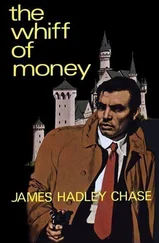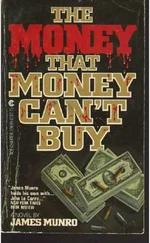■ The Enemy Hedge Fund Scenario
A hedge fund is the perfect cover for an intelligence operation. A malicious trader does not have to destroy a system physically in order to carry out an attack. If an enemy trader sets up a legal entity such as a hedge fund, it can open accounts with major clearing brokers and commence a pattern of ordinary trading. This trading can continue for years as the entity becomes a sleeper cell in the capital markets. In time, clearing brokers come to see the entity as a prime customer generating huge commissions, and they grant it larger lines of credit.
Hedge funds are also classic intelligence-gathering operations that seek information advantage on a continual basis. The tradecraft that intelligence agencies and hedge funds use to gather information is similar. Attending high-level professional conferences is one way to build an expert network and tap into confidential information about new products and inventions. Investing in a company gives the investor access to management. Both fund traders and intelligence agents seek such access. For hedge funds, the purpose is to acquire a trading advantage, such as an early look at a new product that will affect stock prices. For intelligence services, the purpose is to keep ahead of technological developments that will affect the relative economic power of rival states.
The hedge fund sleeper could build close relationships with many brokers around the world so that its buying power was hundreds of times its capital, once all credit lines and the notional value of derivatives were taken into account. On orders from an enemy financial command, the fund network could turn malicious. Orders to sell specific stocks such as Apple, Google, or other widely held names could come flooding in and overwhelm the market makers and buyers. A price decline could start out slowly and gather momentum until it turns into a full-fledged market panic. Circuit breakers could be tripped, but the selling pressure would not abate. Business TV channels would pick up the story, and the panic would spread.
For the enemy traders, there is no tomorrow. They are not worried about paying for their trades in a few days or in the repercussions of mark-to-market losses. Their capital might even be on its way back to banks in Beijing or Moscow, unbeknown to the clearing brokers now handling the orders. Capital markets have certain safeguards against overnight credit risk, but no effective safeguards have ever been devised to insure against losses that arise during the course of a single day. Chinese or Russian covert hedge funds could exploit this weakness while abusing trust and credit built up over years.
The malicious attack need not be confined to cash markets. While the attackers are selling stocks, they could buy put options or short the stock in a dealer swap to add selling pressure. The malicious customer becomes like a virus infecting the dealer’s trading desk, forcing it to add to the mayhem.
Another force multiplier is to begin the attack on a day when markets are already crashing for unrelated reasons. Attackers could wait for a day when major stock indexes are already down 2 percent, then launch the attack in an effort to push markets down 20 percent or more. This might produce a crash comparable to the great two-day crash of 1929, which marked the beginning of the Great Depression.
Financial attackers can also utilize psychological operations, psyops, to increase the attack’s effectiveness. This involves issuing false news stories and starting rumors. Stories that a Fed chairman has been kidnapped or that a prominent financier has suffered a heart attack would be effective. Stories that a top-tier bank has closed its doors or that a hedge fund manager has committed suicide would suffice. These would be followed by stories that major exchanges are having “technical difficulties” and sell orders are not being processed, leaving customers with massive losses. For verisimilitude, stories would be crafted to mimic events that have actually happened in recent years. Mainstream media would echo the stories, and the panic-inducing scenarios would be widespread.
The New York Stock Exchange and the SEC claim they have safeguards designed to prevent this kind of runaway trading. But those safeguards are designed to slow down rational traders who are trying to make money and may be temporarily irrational. They involve time-outs for the markets to allow traders to comprehend the situation and begin to see bargains they might buy. They also involve margin calls designed to cover mark-to-market losses and give the brokers a cushion against customers who default.
Those mitigation techniques do not stop the financial warrior, because he is not looking for bargains or profits. The attacker can use the time-out to pile on additional sell orders in a second wave of attacks. Also, these safety techniques rely heavily on actual performance by the affected parties. When a margin call is made, it applies the brakes to a legitimate trader due to the need to provide cash. But the malicious trader would ignore the margin call and continue trading. For the malicious trader, there is no day of reckoning. The fact that the enemy might be discovered later is also no deterrent. The United States knew the Japanese bombed Pearl Harbor after the attack, but it didn’t see the attack coming until its battleships were sunk or in flames.
A clearing broker could close out the malicious account to prevent more trading, but that moves the open positions from the hedge funds to the brokers. In such circumstances, many brokers would fail, and the cascade of failure would ripple through the financial system and render the clearinghouses insolvent. The entire hierarchy of exchanges, clearinghouses, brokers, and customers could be pushed to the brink of collapse.
Sleeper hedge funds can serve another insidious purpose, acting as intelligence-gathering operations years in advance of an attack. Intelligence analysts today need more than state secrets. Economic intelligence—including plans for natural resource projects, energy discoveries, pipeline routes, and other initiatives—is just as valuable. This information can impact commodity markets, financial stability, economic growth, and the allocation of resources by both the private and the government sectors. Such intelligence is not always known to government officials, but is known to CEOs, engineers, and developers throughout the private sector.
Once a covert hedge fund acquires a material position in a target company, it can arrange to meet that company’s management. Access to management is especially easy at small to medium-size companies that receive less attention from brokerage research departments. Companies like this are often on the cutting edge of new designs in satellites, 3-D applications, and digital imaging. Access is the key. Savvy investors pick up winks and nods and interpret hints to infer the timing and nature of the latest developments. This can continue for years as the covert hedge fund patiently builds trust, churns the account, gathers information, and spots vulnerabilities. Then, like a scorpion, the fund stings, on orders from its sovereign masters.
Skeptics claim that an intelligence or military covert operation in hedge fund form would be easy to detect because of detailed anti-money-laundering and know-your-customer rules, strictly enforced by the brokers. This objection does not withstand scrutiny. The necessary techniques for operating with cover include front companies, so-called cutouts, secret agents, cover stories, and entities layered on top of each other so that the unwitting points of contact cannot see the controlling parties. A covert hedge fund structure involves layers of legal entities in tax-haven countries offering the enemy sponsor a deep cover. Professional assistance is needed from corrupt lawyers or bankers who retain innocent professionals to handle detailed work such as fund administration. Directors are recruited from the advisory companies in offshore jurisdictions that offer administration services to investors. Having innocent parties in the food chain throws counterintelligence agents off the scent.
Читать дальше











